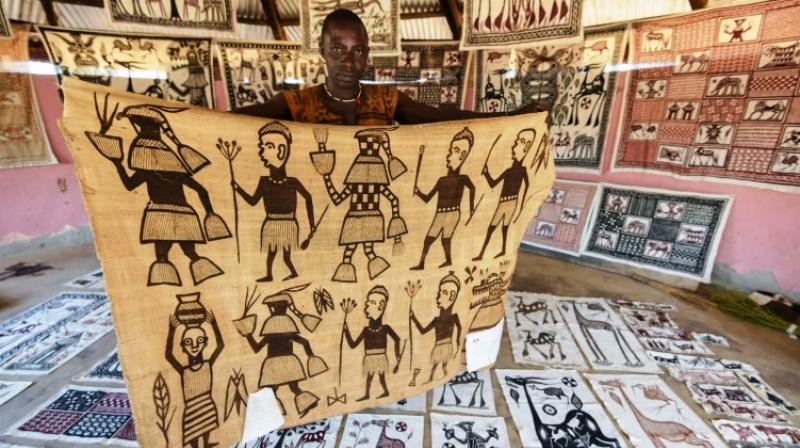Piccasso in I.Coast: A village that narrates an artistic story.

Johannesburg: "I'm sure! I tell you, he came. I saw him!" insists Soro Navaghi, keen to extinguish any doubts about Picasso's visit to a small Ivorian village famed for its painted textiles.
Whether in tourist brochures or online, it is not unusual to find references to Picasso's reputed visit to Fakaha, a remote village in northern Ivory Coast, some 650 kilometres (400 miles) from Abidjan, the economic capital.
French travel guide Petit Fute describes Fakaha as "internationally renowned" for its hand-spun cotton cloth which is painted by the Senufo people and that once "charmed a certain Picasso as he paid a discreet visit to the region at the turn of the century."
A whole mythology has grown up around the question of Africa and Picasso, who never spoke of having been to Fakaha. For the artist who once provocatively brushed off the subject, saying: "Negro art? Don't know it" was also an ardent admirer and passionate collector of African art, who built up an impressive private collection.
Highlighting the resemblance between African sculpture and some of Picasso's work, many art critics see the symbolism and imagery of Africa as one of his sources of inspiration.
One often-cited example is the striking similarity between an African Grebo mask and one of the faces in his 1907 work "Les Demoiselles d'Avignon".
"Whenever someone emphasised the influence of African art on the development of his own work, he would shrug his shoulders, annoyed at being reduced to that: although it is certain he was influenced by it from 1906 when he experienced his first (African) sculptures," says Gilles Plazy, one of his biographers.
"Picasso used everything that came through his door and integrated it into the constant evolution of his artistic process," he told AFP.
For the several hundred residents of Fakaha, there is no question about where the celebrated Andalusian artist and sculptor found his inspiration, after stumbling upon their village some 15 km from the main road to Korhogo. For decades, these local artists have been hard at work in open huts around a sandy track, where they can be found smearing earth-based pigments onto canvas.
Their dexterity is fascinating, their moves precise. Working with knives or sticks, they plunge their tools into the bowls of colour, quickly transforming the white cotton into a work of art covered with animal motifs and figures in masks.
And there is an element of Picasso in it, with a definite similarity between his works and those of the artists of Fakaha. But is this just a random resemblance or creative coincidence? Or did Pablo Picasso actually see or even own one of the Fakaha canvases?
"I tell you, he came here. He was inspired by us," repeats Soro Navaghi, aged in his 60s. Picasso apparently broke down while driving to Korhogo, but set off on foot and eventually turned up in the village "bare chested and without shoes", Navaghi says.
The artist stayed there for several days and even gave the villagers some advice, they say. "It was him who taught us to use sponges and toothbrushes to be quicker and more precise," says Silue Naganki, one of the artists who takes his inspiration from long-dead ancestors.
"Before him, we never used the frames either. It was him who advised us to paint the frames." Ducking into his house, Soro Navaghi comes up with the "ultimate proof", a cotton canvas featuring Picasso himself.

